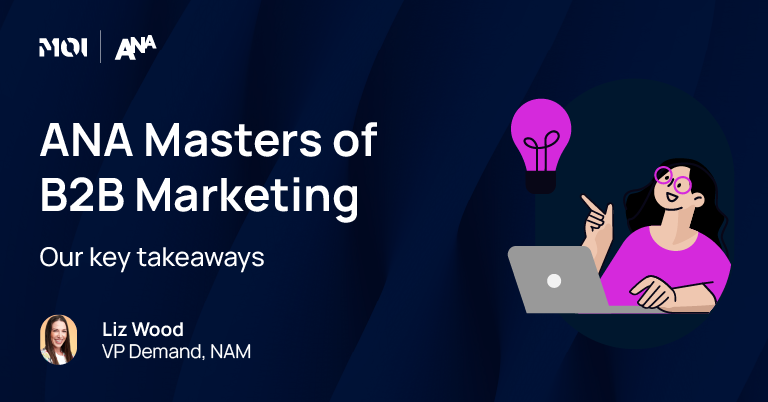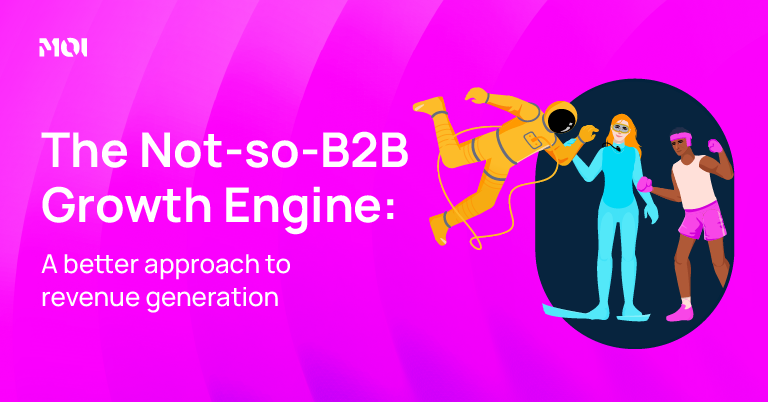
In digital marketing, the decline of third-party cookies has become a pressing concern for businesses. With Google – who has ~65% of browser market share worldwide – recently phasing them out for a significant portion of Chrome traffic, marketers are now forced to look for alternatives. This means, among other shifts to your organizational operations, embracing first-party data. In this blog post, we’ll give you actionable steps you can take in the immediate so you can navigate the cookieless future with more certainty.
Understanding the shift
Third-party data has long been the priority for marketers, but it has its limitations. Firstly, it’s impersonal and often stops brands from efficiently (and personally) engaging with their customers. Data is typically provided in segments, making it difficult to personalize content and message effectively. For this reason, especially in B2B, businesses are increasingly focusing on utilizing first-party data which is data collected directly from customers through various real-time interactions.
The power of first-party data
First-party data tells you a lot more about your customers. It includes a wide range of information such as demographics (firmographics for B2B), purchase history, website activity, interests and behaviors. By making use of this data, businesses can build stronger relationships with prospects and clients and gain deeper insights for targeted marketing efforts. What’s more, with privacy laws like GDPR and CCPA in place, consumers are expecting brands to respect their data and explicitly ask for consent – and first-party data is gathered in a far more transparent way.
Building your first-party data strategy
So you’re ready to make the change. Here are some steps to get started:
- Define your business goals:
- Prioritize those areas where you need to grow your first-party data. Focus on filling in the gaps and aligning your data collection efforts with your business goals.
- Identify those data sources:
- Take stock of the customer data sources you currently have and the types of data you collect. Look beyond traditional systems and consider all the touchpoints where data is collected. Ensure compliance with relevant privacy regulations.
- Standardize your data strategy:
- Integrate and standardize your data across all systems to ensure consistency and accuracy. Set up a measurement plan to continuously optimize your first-party data.
- Implement a Data Management Tool:
- Consider using a Customer Data Platform (CDP) to centralize and manage your first-party data. This allows different teams to access the data and create consistent, personalized experiences across channels.
- Enrich your data:
- Enhance your first-party data by incorporating second-party and third-party data. Data enrichment can provide a more complete customer profile and enable better targeting and personalization.
What else can you do aside from focusing on 1st party data / what else should you be aware of as this landscape continues to evolve?
Focus on Consent Management
With the increasing emphasis on data privacy, marketers need to make consent management a priority. Implementing a Consent Management Platform (CMP) allows users to control their personal data and choose the types of cookies and trackers they are willing to accept. CMPs not only empower consumers but also protect businesses from legal repercussions.
Understand how cookies affect the targeting and performance of various marketing channels
- Keyword based PPC advertising will largely remain unaffected in a cookieless future.
- Programmatic display advertising will face challenges due to the historical reliance on cookies for audience building and targeting. Queue, heightened focus on using 1p data as well as AI contextual for smarter targeting.
- Tactics such as podcasting and CTV will continue to see more investment (due to the captivating nature of the environment) however attribution will remain murky as touch-based models will automatically rule them out as effective.
- Remarketing/retargeting across all channels will see an uptick.
- Methods to obtain more opted in 1st party data – such as webinars, events, gated content, and content syndication – will likely grow.
- Investment into walled gardens and closed networks will increase.
And the list goes on.
Despite the growing list of concerns from one channel to the next, alternative targeting methods, such as making the most of opted-in first-party data, and collaborating with external data providers, can help reduce the impact.
Thriving in the new era
As the cookieless future continues to become more real, businesses must understand that the impact on their marketing efforts goes well beyond just targeting limitations. Reliability of audience identification, particularly with B2B graphing and IP matching, will suffer, especially in Europe and California wherein IP is considered PII. Addressability and attribution will become more complex. Multi-faceted testing will be required to test the effectiveness of different tactics. And privacy compliance will have brighter spotlights. Overall, businesses will need to be smarter about how they approach their holistic marketing strategy. As we’ve highlighted, a great place to start is embracing first-party data. Beyond that, putting in place consent management tools, adapting targeting methods, and rebuilding measurement frameworks, marketers can navigate the changing landscape successfully.



